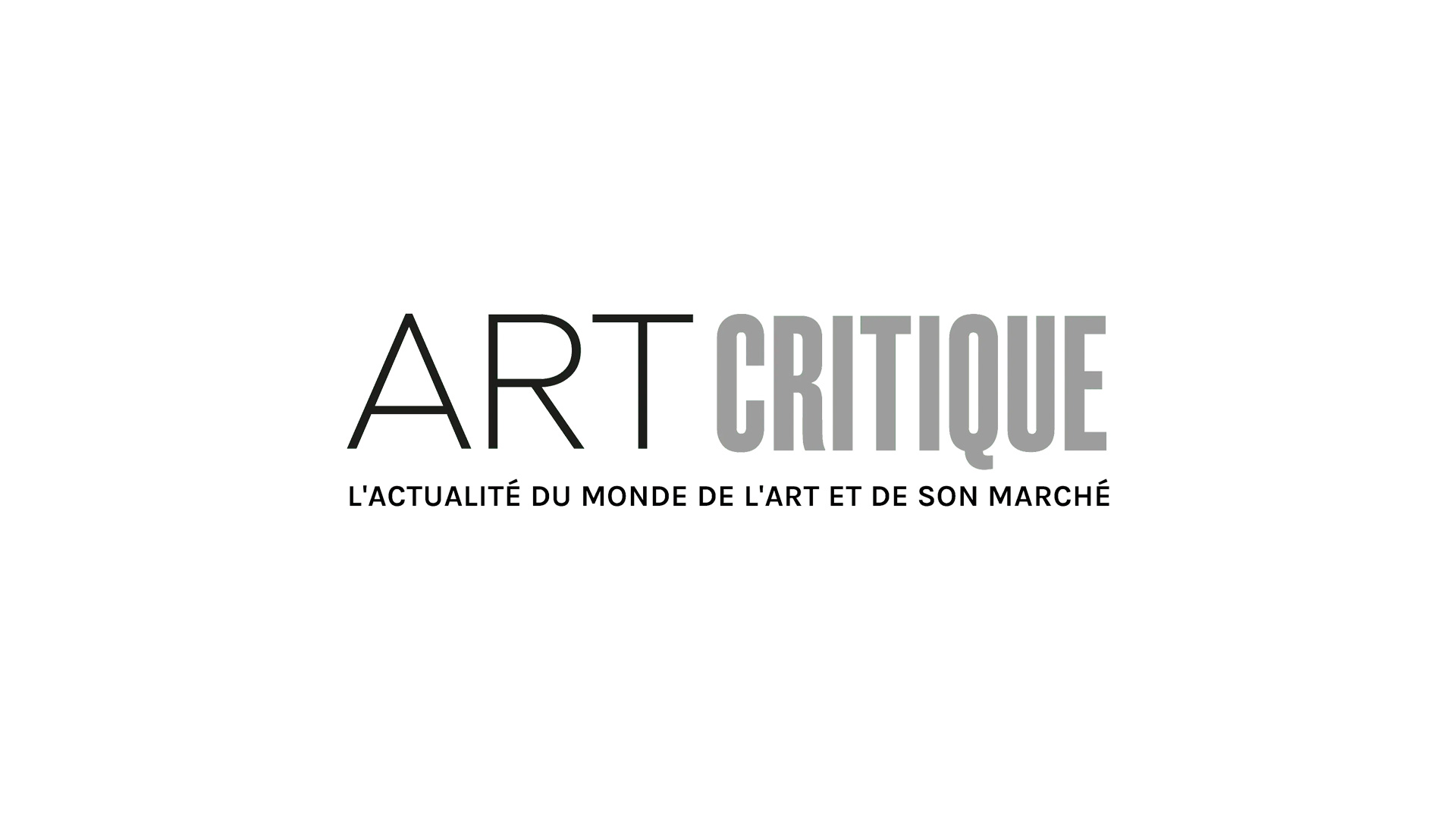A mural made by the street artist Banksy in protest of Brexit disappeared last weekend from its site on a three-story building in Dover, England. A four-tier scaffolding was constructed against the mural on Saturday, leaving the facade barren the next morning. According to the Telegraph, the Godden family who owned the building hoped to sell the piece for 1 million euros and use the proceeds from the sale to benefit charities. CNN reported that many residents of Dover lamented the removal of the controversial work. “On behalf of the people of Dover, I would like to deplore the obliteration of our Banksy. Cultural vandalism of the highest order,” tweeted Dover resident Peter Garstin.

The mural portrayed a worker in monochrome dress chipping away at one of the twelve yellow stars on the blue European Union flag. The cracks left by the worker’s chisel evoked glass, symbolizing both the fragile relationships among European nations and the severe repercussions of Brexit. Important as a ferry port between France and the UK, the site of Dover further echoes the diverging currents in the contemporary political landscapes of the two countries: Emmanuel Macron, the young, French, pro-European Union candidate, won his country’s presidential election in May of 2017 – same month of the artwork’s appearance; by contrast, the art intervention preceded a British vote in support of the former Prime Minister Theresa May’s difficult Brexit negotiations with the EU.
The disappearance of Banksy’s mural occurs at a similarly turbulent time: with only two months left until the UK officially leaves the EU, Britain’s new Prime Minister, Boris Johnson, announced his plan to suspend Parliament until October 14. While being framed as standard procedure, the recess has sparked protests across the European Union.
The UK decided to leave the European Union when only 17 of the 30 million people turned out to vote for the referendum, which favored Brexit by only a 4% percent margin. Brexit was initially scheduled to leave the EU by March 29, 2019. However, terms for UK’s departure were rejected by the British parliament thrice, causing two delays of the original date. Boris Johnson has shortened the time that Parliament has to review and revise a Brexit agreement, which now has a hard deadline of October 31.
Citizens across the UK have vented their anger concerning Boris Johnson’s suspension of Parliament and have voiced their anxiety over the approaching October deadline on social media. According to a correspondent of The Guardian, “up to 5,000 people are thought to have marched in Bristol. Some waved homemade placards emblazoned with slogans like ‘I have the right to representation,’ and ‘shamocracy’ while the crowd chanted ‘stop the coup’ and ‘Boris, Boris, Boris – out, out, out.’”

While the guerilla artist has a long history of creating compelling political artworks that refer to events and policies around Europe, he continues to underscore the impact of Brexit. The Summer Exhibition at the Royal Academy featured his latest artwork entitled Keep Ou. The piece features a salvaged arch from Heathrow airport. The altered customs gate is shuttered, with the words, KEEP OU boldly painted on it. At the bottom of the artwork, visitors can spot the missing “T” being used by a rat – painted in Banksy’s signature stencil style – to break the padlock.
In addition to Banksy, other authors continue to respond against the push for sovereignty in an increasingly globalized world. The recent global waves in nationalism have fractioned societies, tense relations, and fervent fear. We need artists like Banksy to create interventions that force people to question what’s happening and to spark action.





